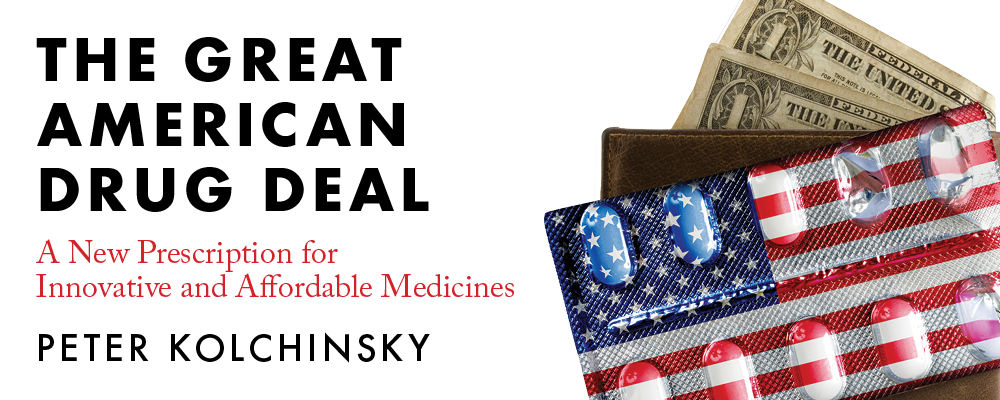
Blog
The Great American Drug Deal’s blog features personal responses to popular articles that criticize the drug industry, written by scientists, students, and those who work in the biopharmaceutical industry.
Rob Shaffer responds to A. Gordon Smith’s article, “The Cost of Drugs for Rare Diseases Is Threatening the U.S. Health Care System” (Harvard Business Review).
Think of a newly approved drug as you would buying a new home. With the new home comes a mortgage, taxes, insurance, and upkeep; the mortgage is often the most significant of the three, at least upfront. After the 15- or 30-year payment term, you own your house, and just have to pay taxes, insurance, and upkeep, a far less expensive monthly total. Drugs are similar: under patent protection the innovative company can charge a premium to recoup development costs and turn a profit to encourage further investment in the company. After patent expiration, cheap generics compete and drive down the price of the drug, similar to paying off your house and only having to spend on taxes, insurance, and upkeep.
Marion Paolini responds to Abbey Meller and Hauwa Ahmed’s article, “How Big Pharma Reaps Profits While Hurting Everyday Americans” (American Progress).
In a very recent past life, I was working as a researcher in academia. When I read an article like “How Big Pharma Reaps Profits While Hurting Everyday Americans” by Abbey Meller and Hauwa Ahmed, I find it misleading to read a claim like “Pharmaceutical companies receive substantial U.S. government assistance in the form of publicly funded basic research.” In the lab I was working for, which was part of an academic institution, private contributions, i.e. the pharmaceutical industry, foundations and individual donors, were actually our largest financial contributors, funding over 60 percent of research. The government (taxpayers) contributed to only about a third of the costs.
Ben Pope responds to Eric Bender’s article, “Cost of Cancer Drugs: Something Has to Give” (Managed Care Magazine).
I am often puzzled by the enormous sale prices of modern art, partly because I prefer baroque, but also because I am cheap and not in a position to buy much of anything. To me, six inches of duct tape and a banana are worth a few cents, but to certain modern art patrons, the combination was worth more than two years of income for most Americans. Despite my lack of appreciation, the monetary value of this artwork, as with all exchanged goods and services, was determined by the negotiated price someone was willing to pay.
Alex Wang responds to Riley Griffin’s article, “Two Big Drug Flops Show How Health-Care Economics Have Changed” (Bloomberg Businessweek).
Heart disease is the most fatal and prevalent disorder in the United States, costing over 600,000 lives and over $200 billion every year. A critical risk factor for developing heart disease is having high cholesterol, a common condition estimated to affect over 1 in 10 adults or around 60 million Americans. Over the past few decades, millions of people with high cholesterol have been successfully treated with a class of drugs called statins. Statin medications, which slow down cholesterol synthesis, are now a ubiquitous, safe, and cheap class of generic medicines that have kept many alive and out of hospitals. There remains a significant population, however, for whom statins are not as effective, and there have been few alternatives—until recently. In 2015, Sanofi and Amgen launched the first of a new class of cholesterol-lowering drugs called PCSK9 inhibitors. PCSK9 inhibition is an elegant and highly effective way of lowering LDL-cholesterol by turbocharging the body’s own cholesterol elimination system.
Mark Charbonneau responds to Abbey Meller and Hauwa Ahmed’s article, “How Big Pharma Reaps Profits While Hurting Everyday Americans” (American Progress).
For the past several years, I’ve recognized a divide between my professional and personal lives. Professionally, I work as a scientist for a biotechnology company that develops new therapies for patients with rare metabolic diseases, like phenylketonuria (PKU). People with PKU must adhere to extremely low-protein diets to prevent permanent intellectual disability, and these patients desperately need more effective treatments with fewer side effects. I’ve observed firsthand how challenging, expensive, and time-consuming it is for teams of highly trained and creative professionals to develop a new drug.
Reliable, high-quality generic drugs are the great value proposition of continued biomedical innovation. They are the ultimate price control on branded drugs and a unique phenomenon in all of healthcare, where nothing else goes generic – not hospitals, not services, not surgery.
Drugs are a manufactured good. The high prices of branded drugs that are necessary to incentivize investment in risky research projects are like a finite set of mortgage payments. Once a mortgage is paid off, America takes ownership of an inexpensive public good. Through their taxes and insurance premiums, our parents paid for branded drugs and passed them on to us as inexpensive generics, as they might a home. Over 90% of all prescriptions in America are for generic drugs and each new drug we invent to improve our standards of care is built on a foundation bought and paid for by past generations.